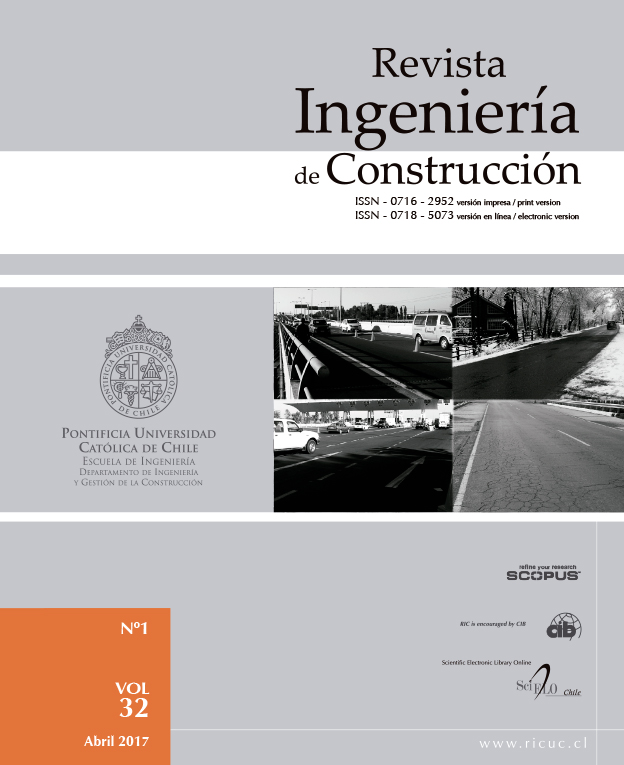Superpave zoning for Chile
DOI:
https://doi.org/10.4067/S0718-50732017000100003Keywords:
Mantenimiento de los pavimentos, superpave, capas estructurales, ligantes asfálticos, influencia de estacionesAbstract
In Chile, the selection of asphalt binders is based on traditional specifications. Although the Superpave specification has not been implemented yet, it was consider important to make a zoning process of the Chilean territory according to this methodology. This activity relied on the information of 94 weather stations of the Chilean Meteorological Service (DMC in Spanish) and Chile’s Water Department (DGA in Spanish), which have reliable data for a minimum of 20 years. Weather data, together with the Köppen climate classification for Chile and the topography of our territory, were used to define approximate zones where the use of each type of asphalt binder is appropriate. Zoning data indicate that most of our territory can be covered by three types of asphalt binders: for the northern and southern regions the use of PG 58- 28 is recommended; the central region requires PG 64-22; and finally, the Patagonia and high mountain zones need PG 52-34. In the IX Region, there is a small area in the Andean foothills, where PG 64-34 is required, according to the available climate information and the methodology applied. Classifications PG 64-22, PG 58-28 and PG 52-34 are traditional binders, which were zoned for high-speed traffic conditions and moderate traffic volume.


